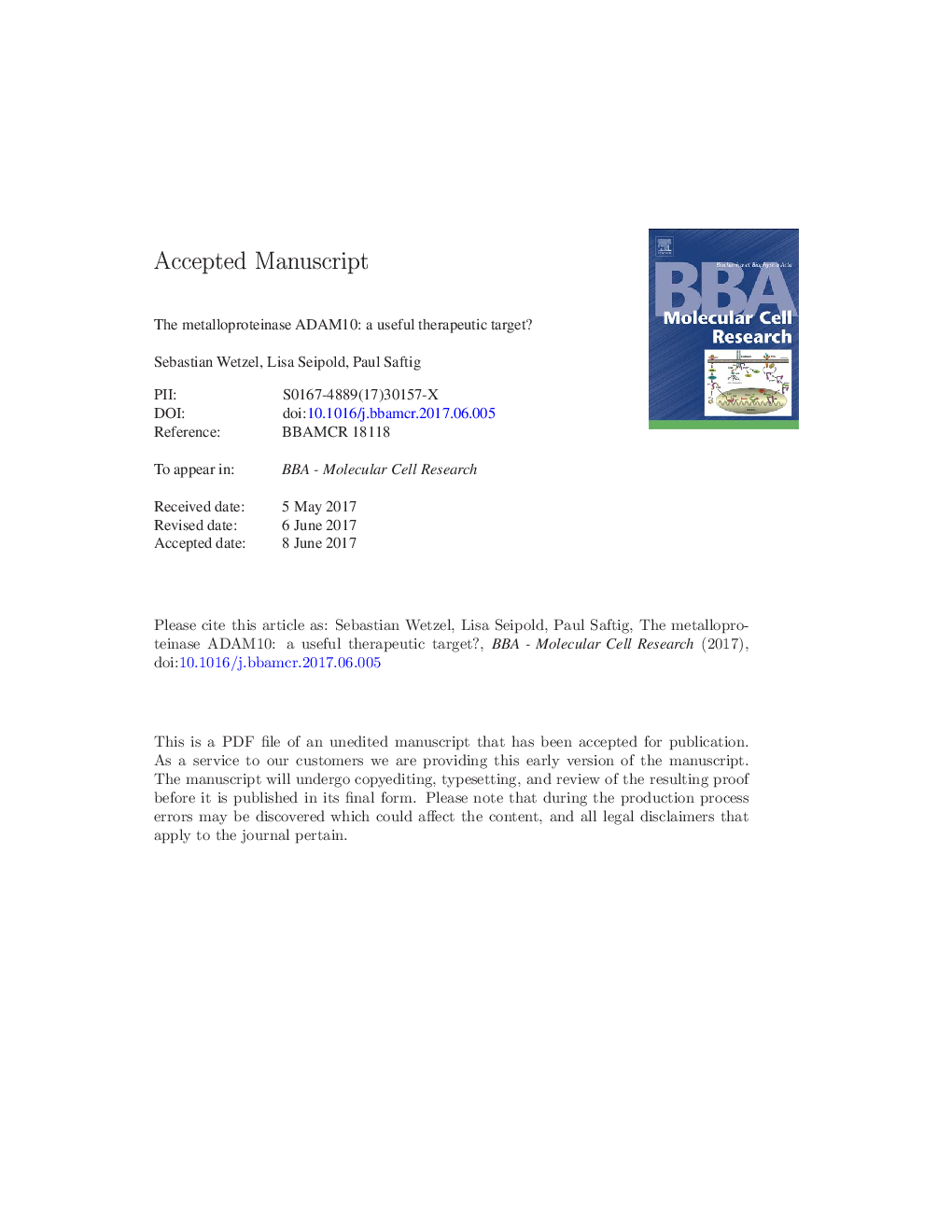| Article ID | Journal | Published Year | Pages | File Type |
|---|---|---|---|---|
| 5508568 | Biochimica et Biophysica Acta (BBA) - Molecular Cell Research | 2017 | 52 Pages |
Abstract
Proteolytic cleavage represents a unique and irreversible posttranslational event regulating the function and half-life of many intracellular and extracellular proteins. The metalloproteinase ADAM10 has raised attention since it cleaves an increasing number of protein substrates close to the extracellular membrane leaflet. This “ectodomain shedding” regulates the turnover of a number of transmembrane proteins involved in cell adhesion and receptor signaling. It can initiate intramembrane proteolysis followed by nuclear transport and signaling of the cytoplasmic domain. ADAM10 has also been implicated in human disorders ranging from neurodegeneration to dysfunction of the immune system and cancer. Targeting proteases for therapeutic purposes remains a challenge since these enzymes including ADAM10 have a wide range of substrates. Accelerating or inhibiting a specific protease activity is in most cases associated with unwanted side effects and a therapeutic useful window of application has to be carefully defined. A better understanding of the regulatory mechanisms controlling the expression, subcellular localization and activity of ADAM10 will likely uncover suitable drug targets which will allow a more specific and fine-tuned modulation of its proteolytic activity.
Keywords
HGFPPARLPCmAChRAPPGPCRPACAPADAM10PKCGPiSirt1AP2Retinoid X receptorhttNICDsirtuin 1FMRPPrPcRARRXRadaptor protein-2TACItransmembrane activator and CAML interactorTSCChMVECBACE-1β-site APP cleaving enzymePAC1PrPscRetinoid Acid ReceptorTNFscrapie prion proteinFLSAβEGCGHSCAPLEGFmAbOSCCACEG protein coupled receptorTetraspaninα-HemolysinADAMRheumatoid arthritisMonoclonal antibodyHLAangiotensin converting enzymeAPRILinterleukinBAFFamyloid betaT-ALLDiseaseAlzheimer's diseaseHuntington's diseasea disintegrin and metalloproteinaseDrugsNotch intracellular domainTherapyCNSEctodomain sheddingWorld Health Organizationhuman microvascular endothelial cellHepatic stellate cellliver progenitor cellcentral nervous systemendoplasmic reticulumepidermal growth factorB cell activating factorHepatic growth factortumor necrosis factorT cell acute lymphoblastic leukemiaAPL, acute promyelocytic leukemiaSystemic lupus erythematosusSLEfibroblast-like synoviocytesRegulationMicroRNAMiRNAmapHuntingtinHIVhuman immunodeficiency virusfragile X mental retardation proteinmitogen-activated proteinamyloid precursor proteinProtein kinase Ccellular prion proteinproprotein convertaseoral squamous cell carcinomatongue squamous cell carcinomaWHOglycosylphosphatidylinositolmuscarinic acetylcholine receptorperoxisome proliferator-activated receptora proliferation-inducing ligand
Related Topics
Life Sciences
Biochemistry, Genetics and Molecular Biology
Biochemistry
Authors
Sebastian Wetzel, Lisa Seipold, Paul Saftig,
